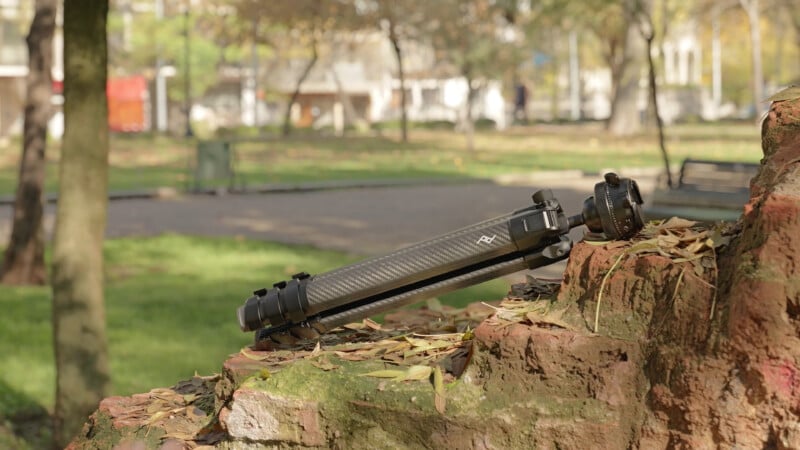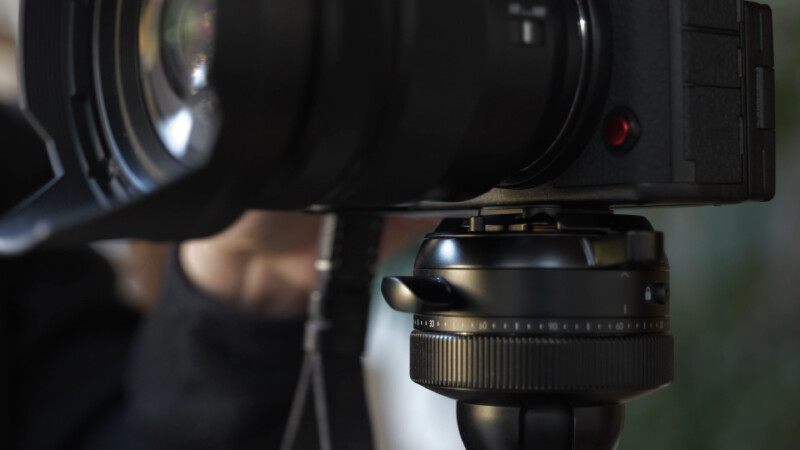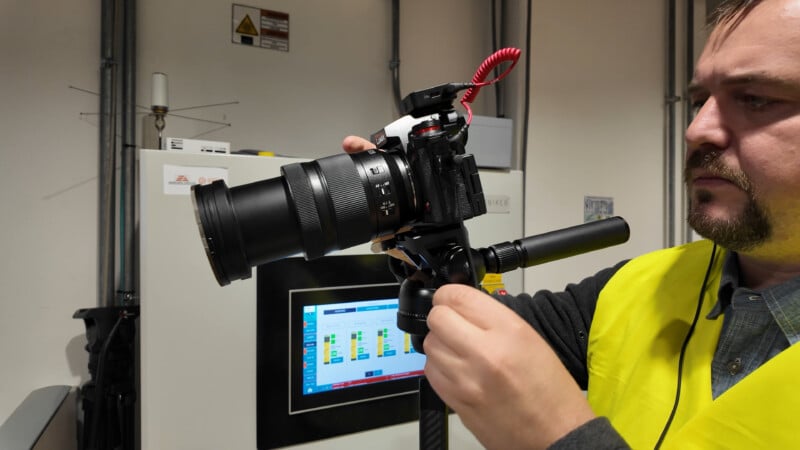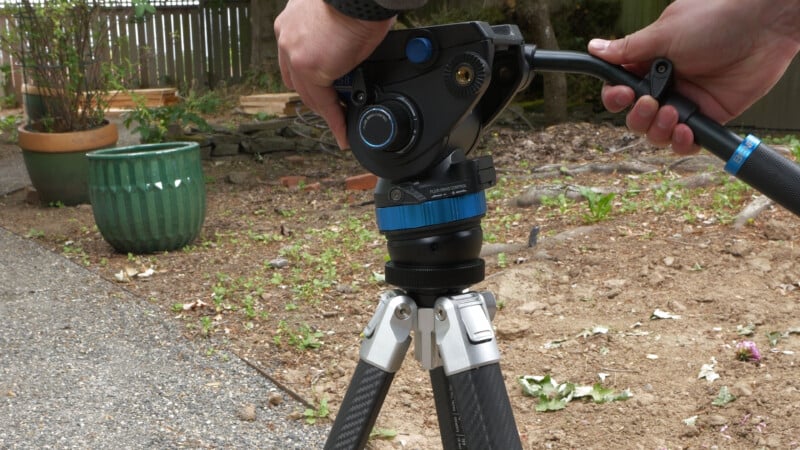Peak Design Pro Lite Tripod Review: The Travel Tripod We Needed
I’m not a huge fan of ultra-light travel tripods. As compact as they are, they often lack the stability required for anything beyond casual use. There is a balancing act involved in finding the right amount of stability while still keeping the tripod convenient enough to enjoy. I did not like the Peak Design Travel Tripod due to its fiddly head design and slightly wobbly legs, but they may have reached the Goldilocks zone with the latest Peak Design Pro Lite. This one feels just right. At $800, though, you have a fairly high price of admission.
Editor’s note: This review is only for the Peak Design Pro Lite tripod. PetaPixel did not have adequate time with the Pro and Pro Tall tripods to formulate a complete review due to Peak Design-set time restrictions it had with advance copies of the Pro Series.

Peak Design Pro Lite Tripod Review: The Design
The Peak Design Pro Lite is part of a series of new Pro tripods and is the lightest. While not called as such by Peak Design and it doesn’t replace the company’s Travel Tripod, it is for all intents and purposes acting like one. These new tripods have rigid carbon-fiber legs in a four-section layout that consists of Peak Design’s “trapezoidal” cross-section. Coupled with some slim and very lightweight leg locks that snap into place to lock each section, this all leads to a combined weight for the Pro Lite — the focus of this review — of 3.6 pounds (1,700 grams), which is very easy to walk around with.

When stowed, the tripod is only 19.2 inches long, which easily allows it to fit in a carry-on suitcase. Extend all the legs without using the center column, and the Pro Lite can reach 55 inches in height, which works pretty well for the average stature. Raising the center column can extend the total height to about 64 inches, which is as much as I would personally need.

The Peak Design Pro Lite tripod may have lighter and more compact legs, but it still has a very stable and serious ball head. The design is similar to the Travel Tripod head but with a larger, more serious, more refined build to it. The new head has an easy friction ring that goes from loose to locked very quickly. I didn’t have any issues with locking the tripod, only to find my composition skewed by the weight of the attached camera — a common problem with travel tripods. Even putting all my force onto the head, I wasn’t able to easily move it and this is why the Pro Lite with this head can support up to 35 pounds of camera gear. The twisting ring is also easy to find in the dark because you aren’t fiddling with a specific knob.

The ball head also has a tension knob which only controls the rotation of the camera independently from the ball mount. It uses an Arca-Swiss compatible tripod plate lock on the top and this has an automatic locking function via a large silver button when the plate is pressed down. Peak Design place two screws in this top mount to lock the shorter Peak Design plates in place but you can remove these to allow for longer ones. There is also a safety switch that can prevent the tripod plate from unlocking at an inopportune time as well as a spirit level incorporated into the top of the ball head.

Peak Design Pro Lite Tripod Review: The Functionality
Let’s start with the leg locks and how they handle. The design is very similar to the original Travel Tripod with thin levers that lock the legs with minimal force required, and there is no slippage after securing them. They are not adjustable, but the tension seems to be calibrated well when the snaps are fully closed. They seem easier to manipulate and more rigid than the lighter travel version and I had no issues with them. I still prefer a classic screw-lock but the Pro Lite leg locks seem to function just fine. I also like that I can open all three up with one hand at the same time and would have no issues doing so with gloves on.

There are three stages of extension if you want the legs to be in a wider and more stable position, such as to accommodate uneven terrain or to get the tripod lower to the ground. On that note, you can drop the tripod down to only 6.2 inches above the ground. However, the center column that is provided with the standard kit will not allow for such a low setting, so there is a removable plug in the column with a provided tool to remove the center column entirely. This then allows you to use just the upper column mount instead and achieve the lowest possible setting.

It’s nice that there is a way to put the tripod all the way to the ground for macro work, but I wish the process were less convoluted and without needing any tools to make it happen. As an example, Falcam has an excellent two-section center column on its TreeRoot tripod with a quick release and this works far better. It’s somewhat disappointing to not see Peak Design be more intentional in this area.
As I’ve already mentioned, the ball head seems well-designed and is certainly a far more rigid setup than what most travel tripods have. The Peak Design tripod plates are tiny and well-built, but you need to use an Allen key to lock them in place, so I would plan on buying several and “permanently” attaching them. I prefer plates with a locking handle that you can twist by hand, and thankfully the ball head is compatible with other dovetail plate designs so I can use the gear I already own.
The beauty behind this particular tripod design is that it is compact while sporting a more rigid ball head. This hits the best of both worlds when it comes to a functional but portable tripod design. I didn’t have any issue with minor wind and long exposures combined, and the ball head inspired confidence that my camera gear would stay put.

Peak Design Pro Lite Tripod Review: The Extras
If you want to expand your tripod to cover other types of camera work, you’re gonna have to get some extras. There is a video-style head that clips right into the existing ball head tripod plate mount and this gives you a longer handle to do tilts and pans. The tension knob works well and the head has a smooth fluid resistance to it, but the handle feels like it is constructed the exact same way as a smartphone selfie stick. I don’t feel confident that it would survive any serious use or abuse. The $150 price is going to raise the cost of the whole kit if you want to do some basic video work.

There are replacement feet if you want to put some hard spikes on the legs for better outdoor grip. The rubber feet that come with the tripod are secured in place with strong screws and they can be replaced with spikes, but the $50 cost is pretty high again for these optional extras. You can also get a separate leveling base, which replaces your ball head and provides a standard 3/8-inch screw. This lets you use an existing ball head or video head of your choosing to place on the lighter Peak Design Pro Lite legs. You will have to pay $130 for this add-on, but in all honesty, I see this being a more useful option on the beefier Pro legs or Pro Tall legs, which can support larger true video heads and ball heads.

Lastly, there is a pretty basic smartphone adapter that comes with the Peak Design travel tripod kit. I guess times are tough for everyone because this is now an optional accessory if you want to put it on the Pro Lite legs, and it will run about $20. If you were to fully kit out the Peak Design Pro Lite, it’s going to make this pricey tripod even pricier.

However, most of these accessories are either skippable or only for very specific use cases. I think most users will find the basic Pro Lite kit excellent for most travel photography situations. I’d even feel confident using it for more serious photography and certainly had no problems doing fifteen-second exposures on a windy mountaintop. If I needed to use really long telephoto lenses or heavy video rigs, I would definitely look at the more serious Pro legs in either the standard or tall versions with a leveling base attachment. Regardless, Peak Design has made tripod legs that are far more capable than its travel series, while still being light enough to take almost anywhere. The fact that they also made a more serious ball head that expands the usability is icing on the cake.
At $800, I think the Pro Lite setup is worth the cost and I would feel far more confident using it for travel and adventure photography than I did before.
Are There Alternatives?
The Falcam TreeRoot travel tripod is feature-rich, has excellent carbon-fiber legs, and is slightly lighter than the Pro Lite. It’s also far less money at $500. However, the ball head is not able to support the same weight with the same rigidity. I also recommend the Leofoto MR.Q LQ-284+LH-36 kit and love the similar weight and stability. You can find it for under $600 and at 21 inches in length, it can barely squeak into some carry-on luggage.
Should You Buy It?
Yes. Peak Design always delivers smart design, and the tripod kit is functional. There are more affordable options, but anyone who uses this tripod will probably become a converted Peak Design fan.